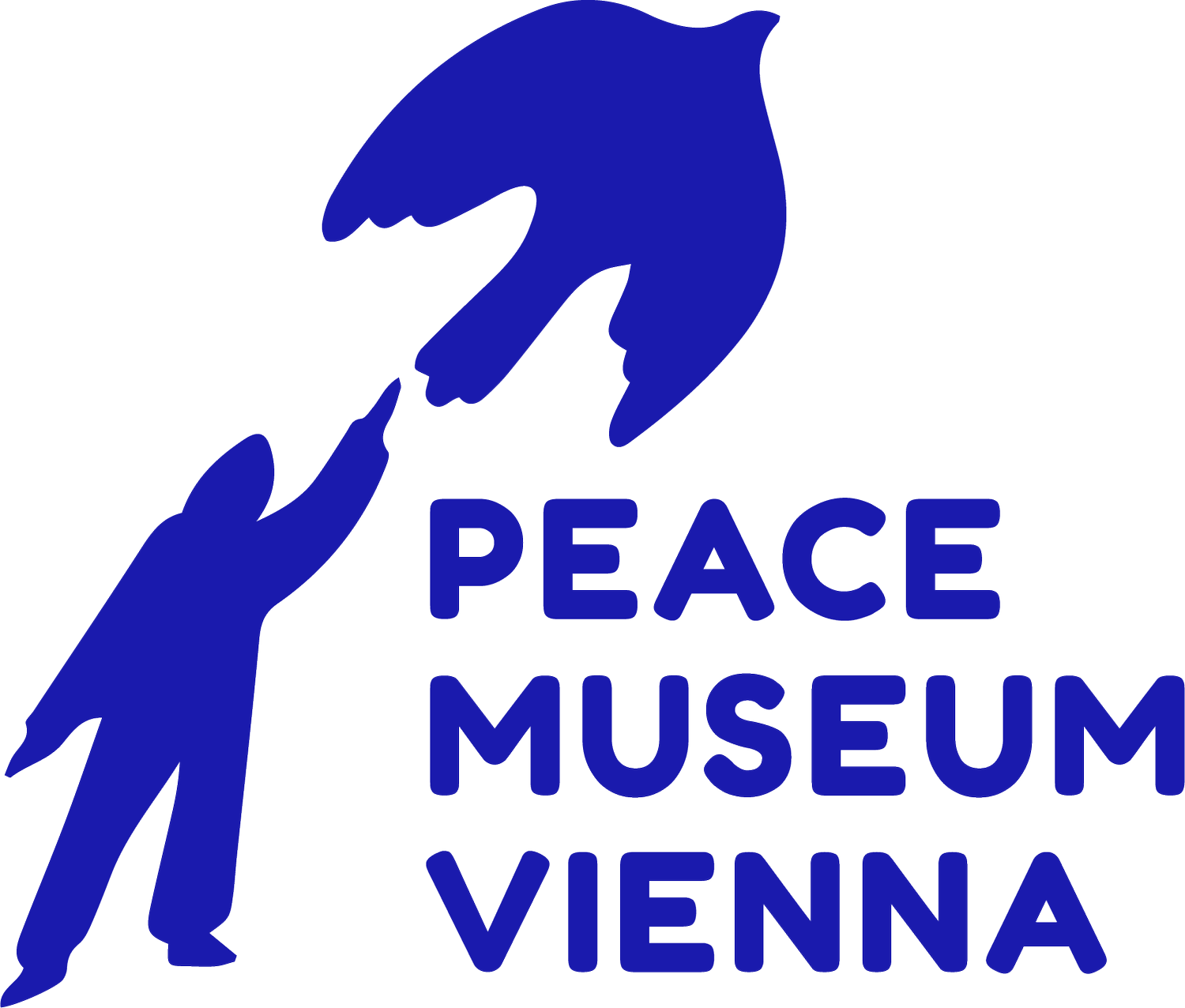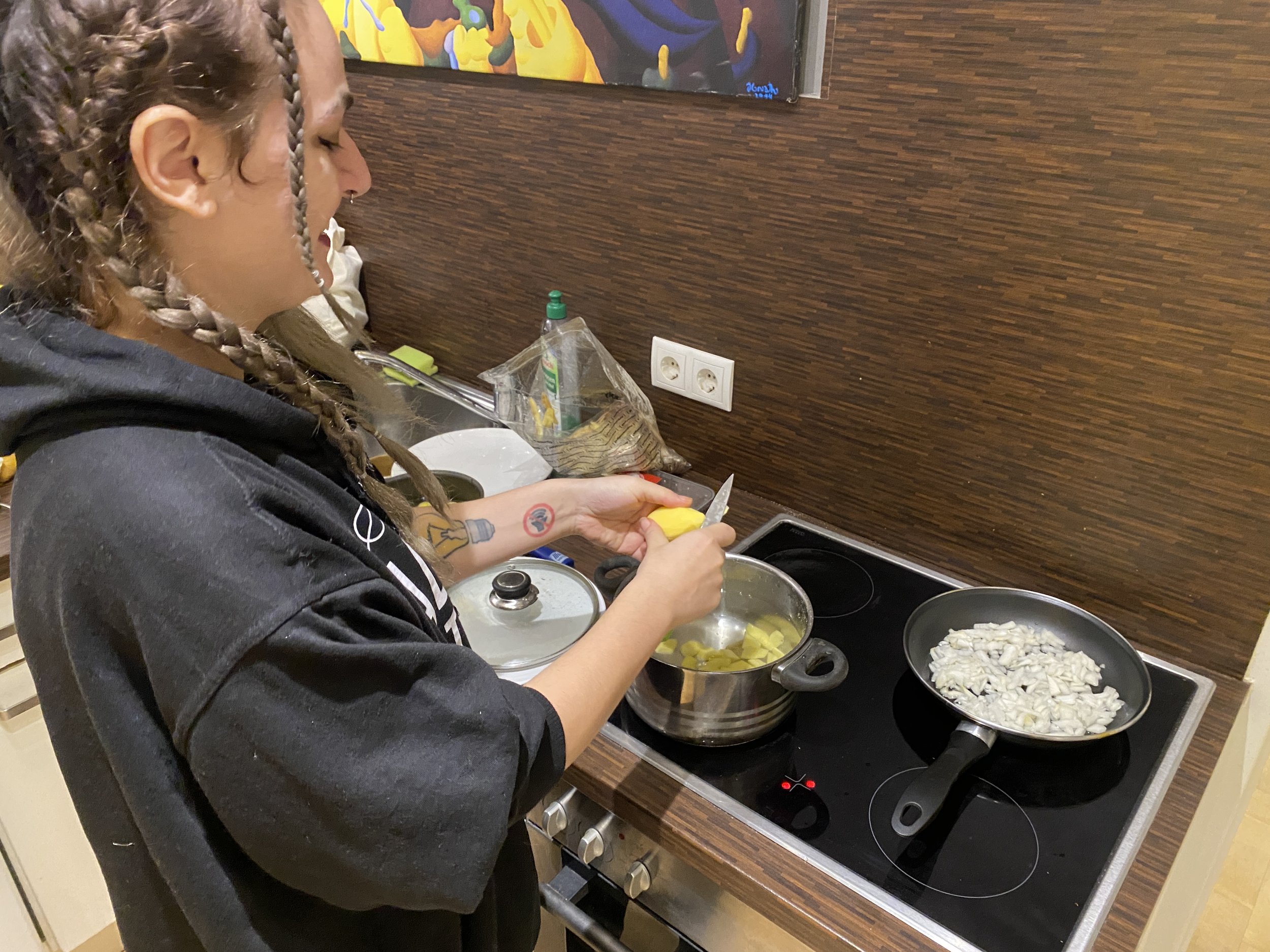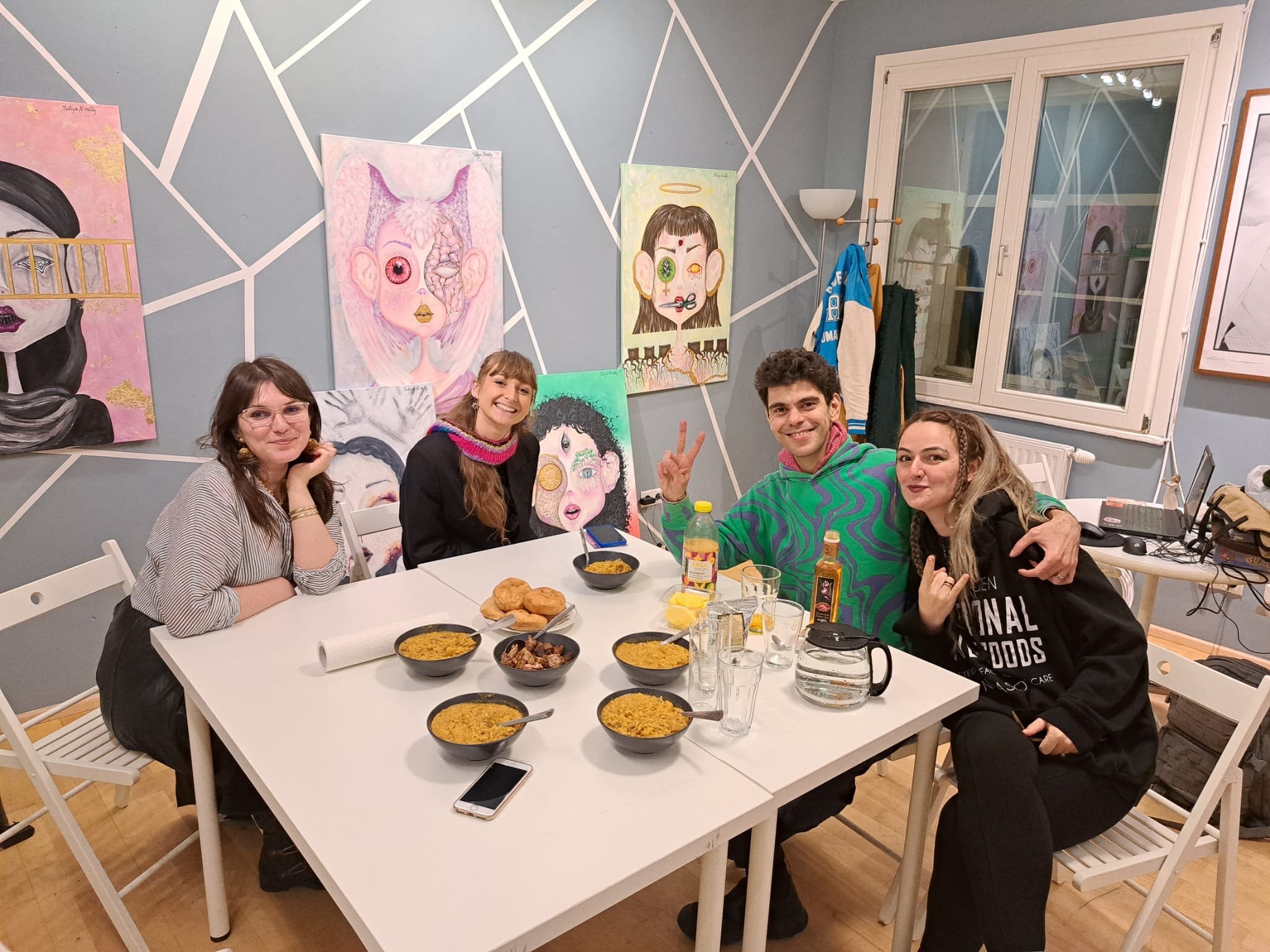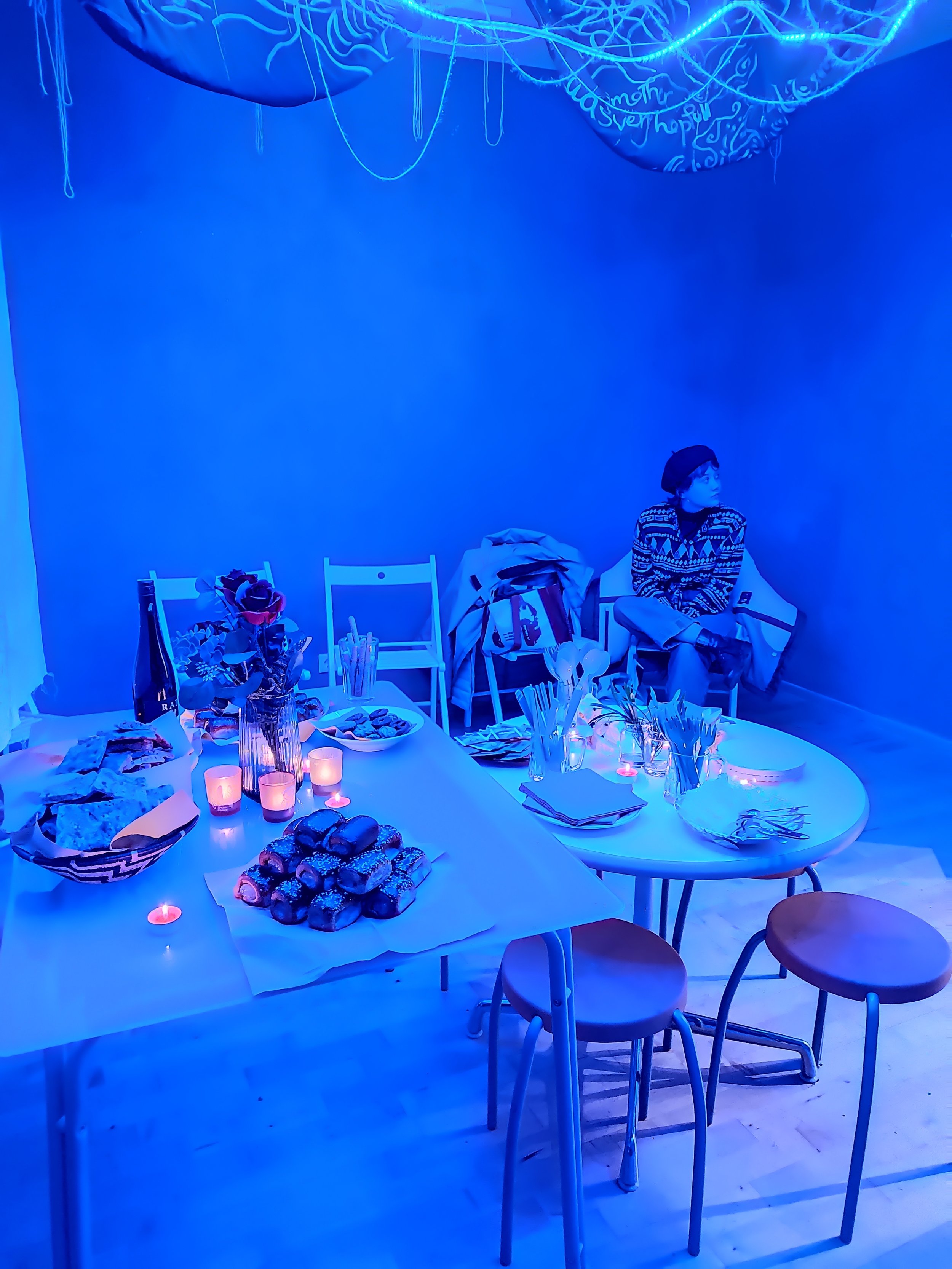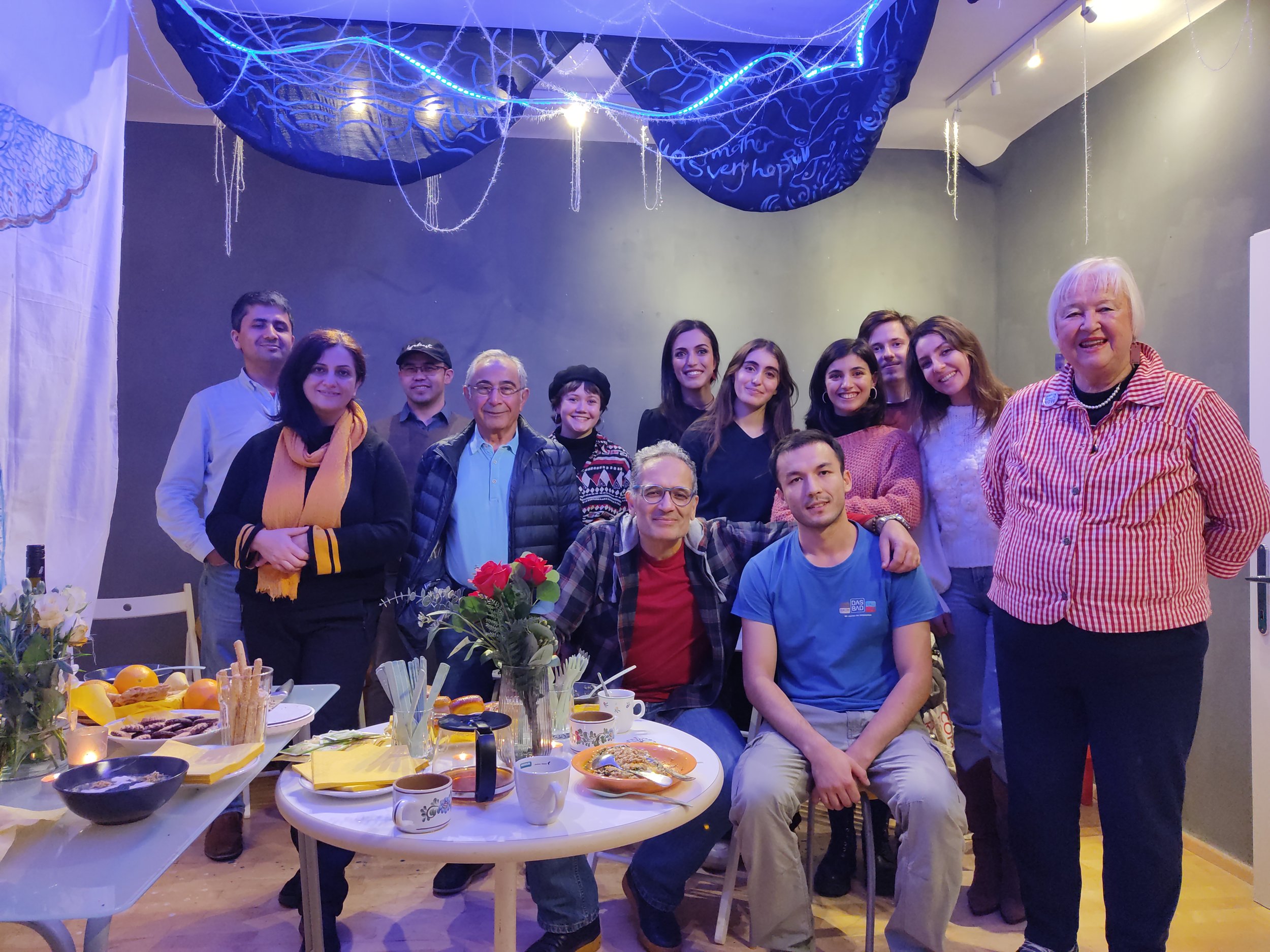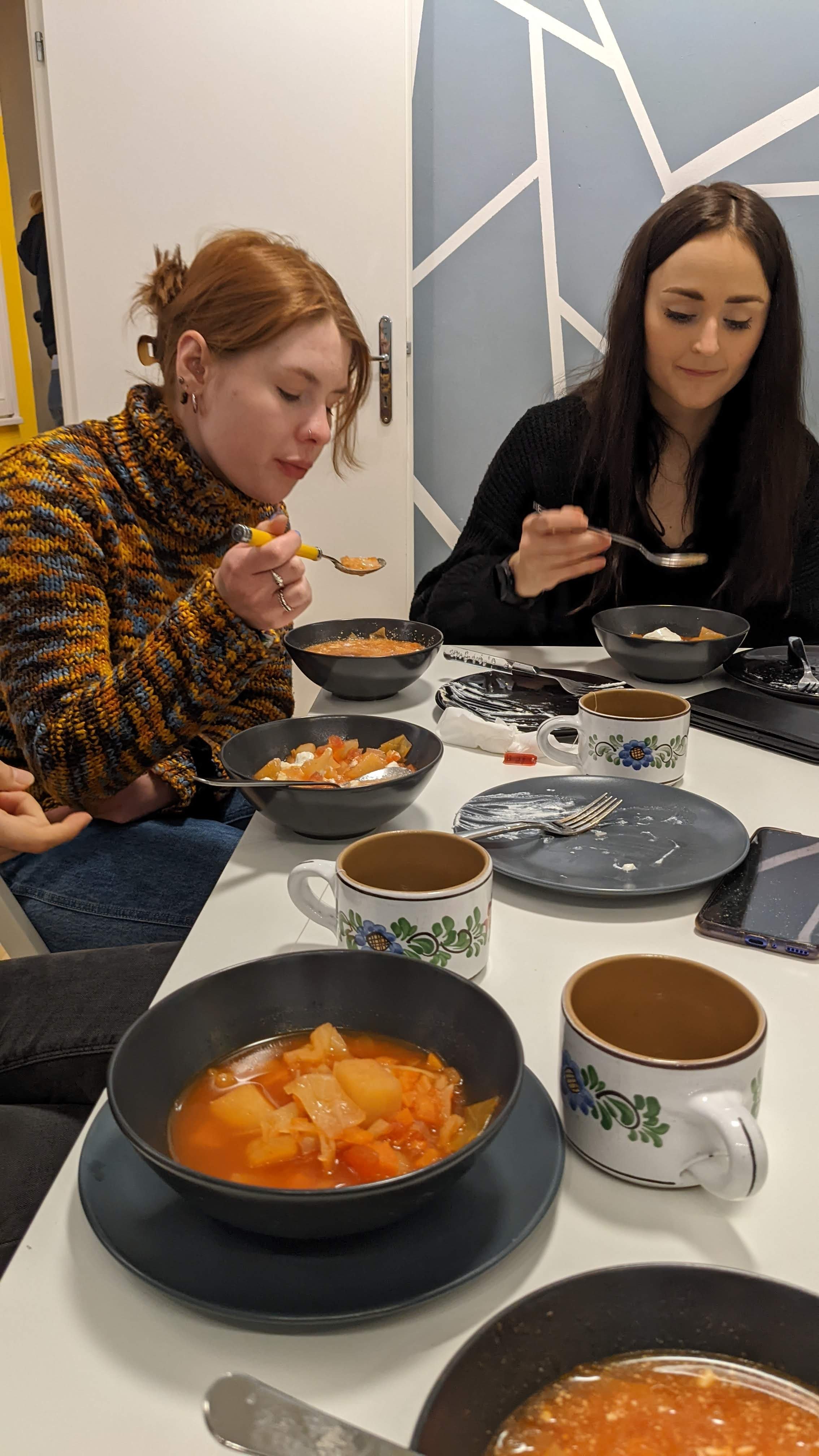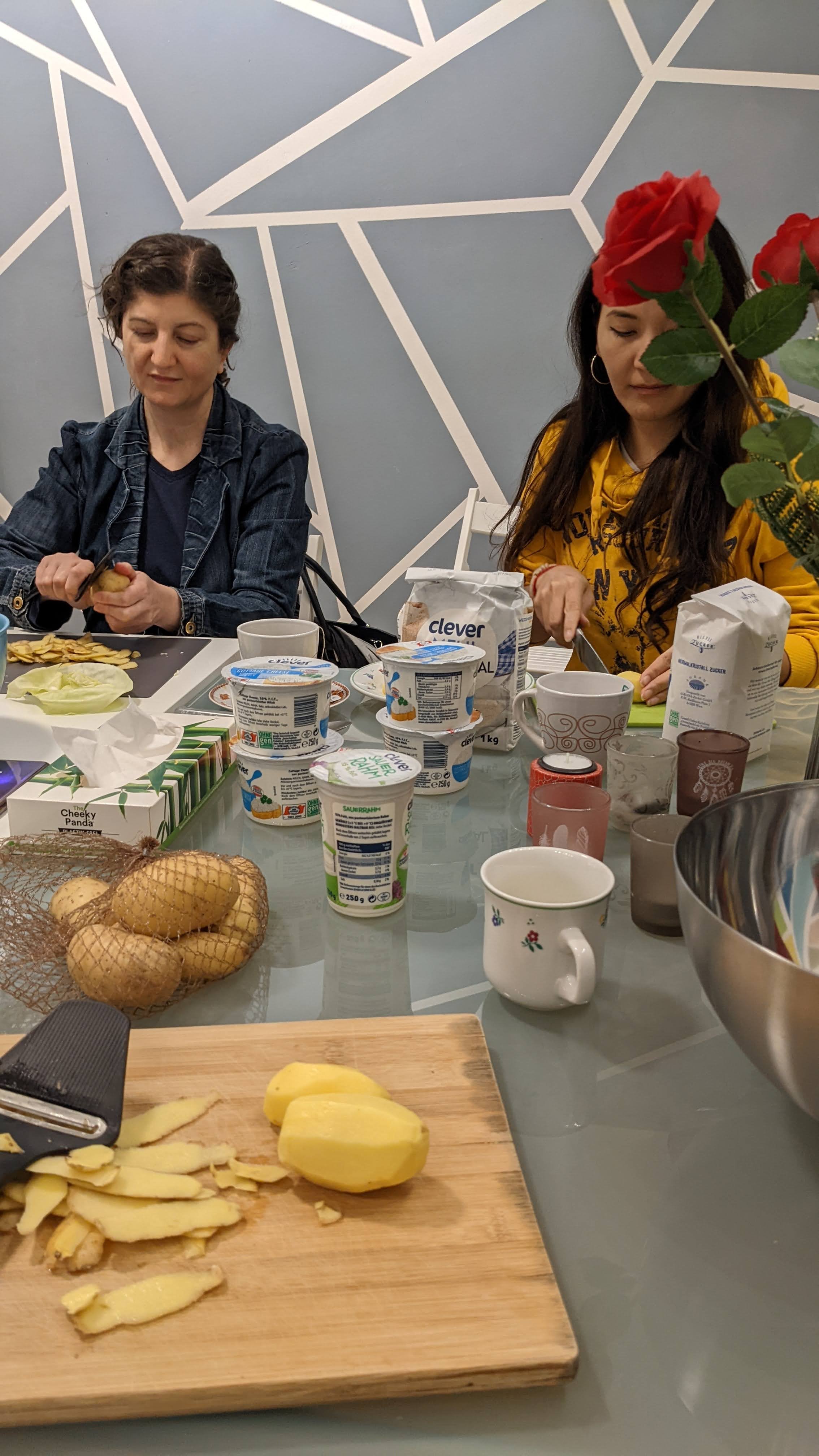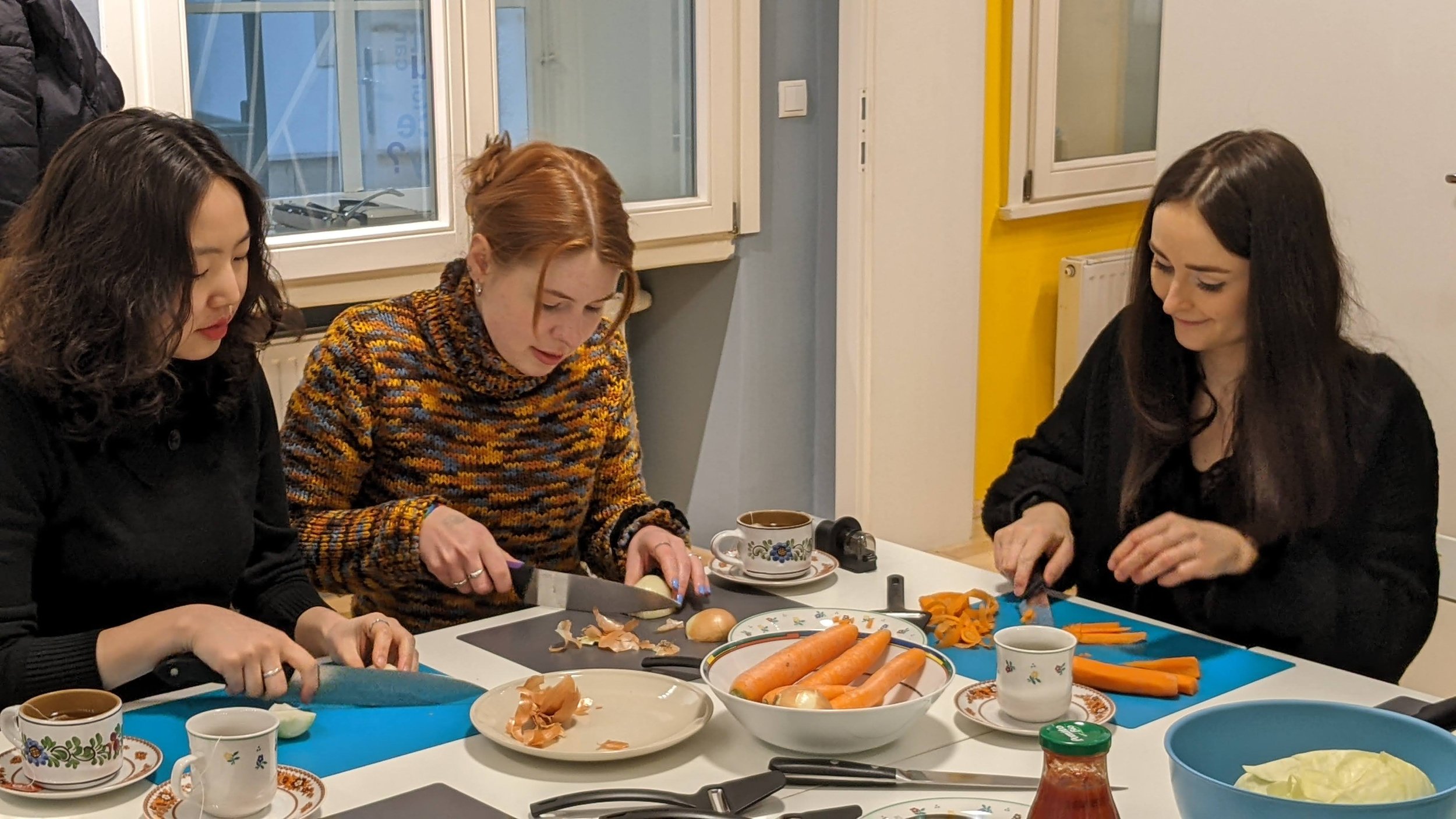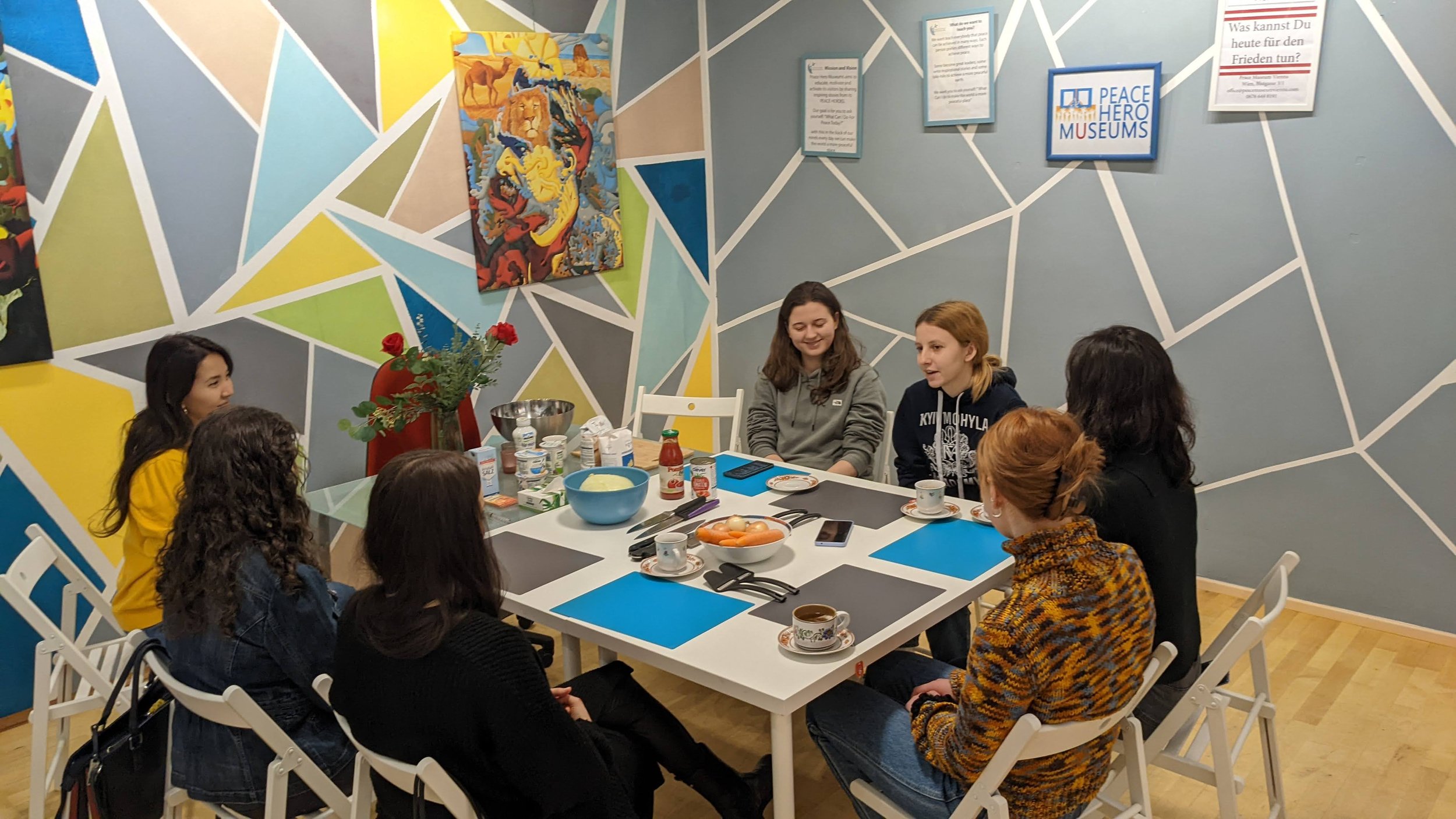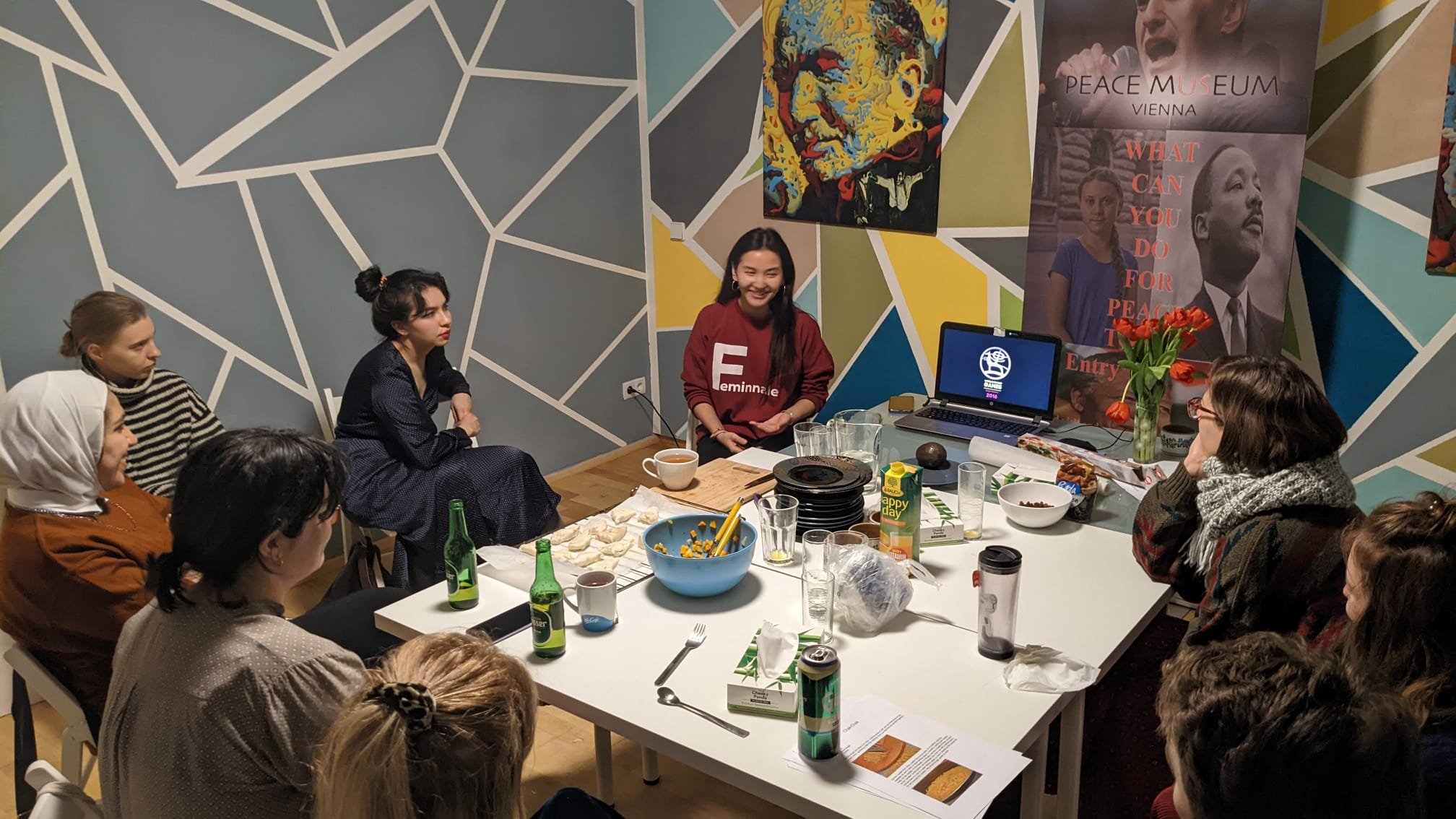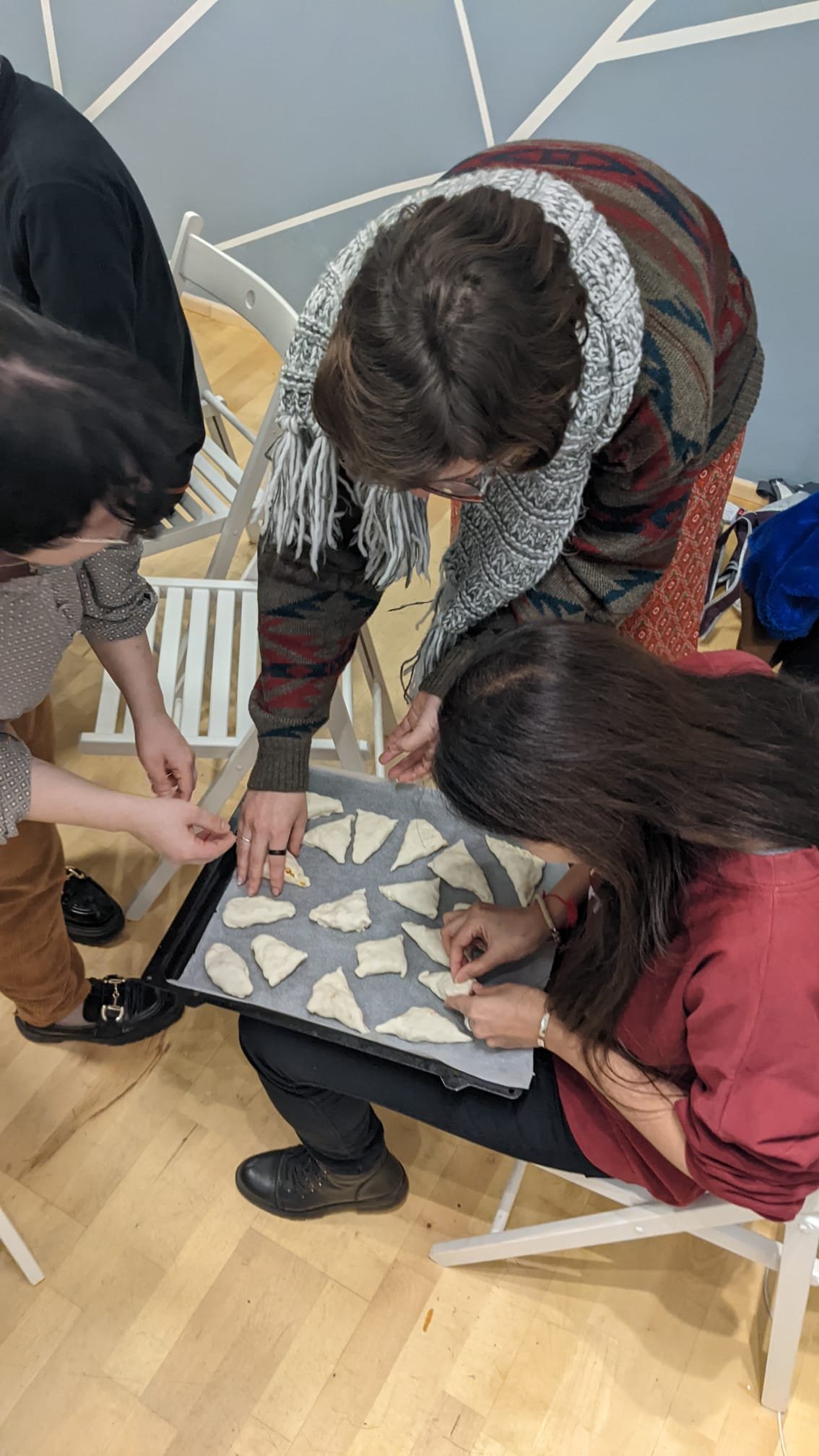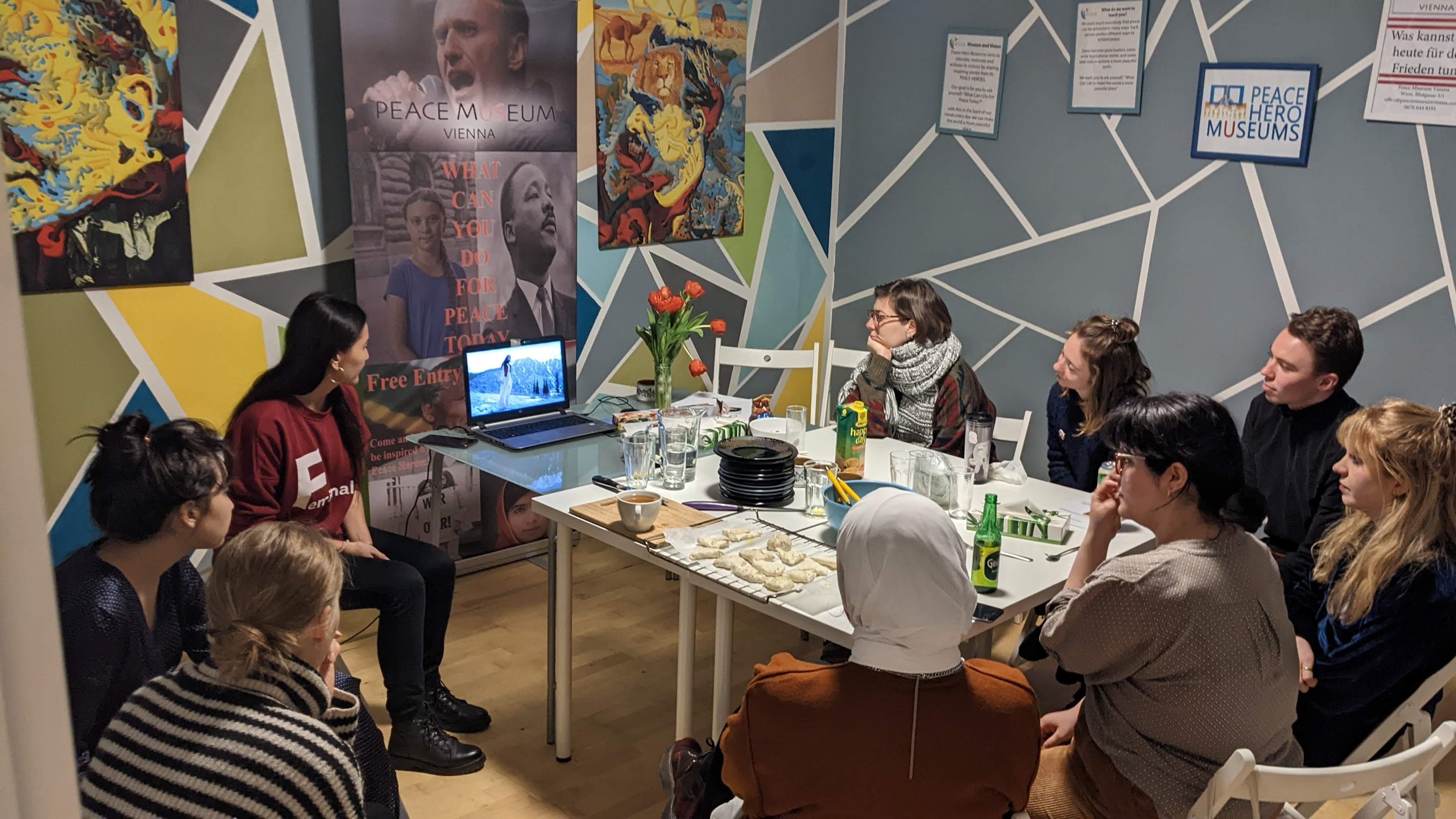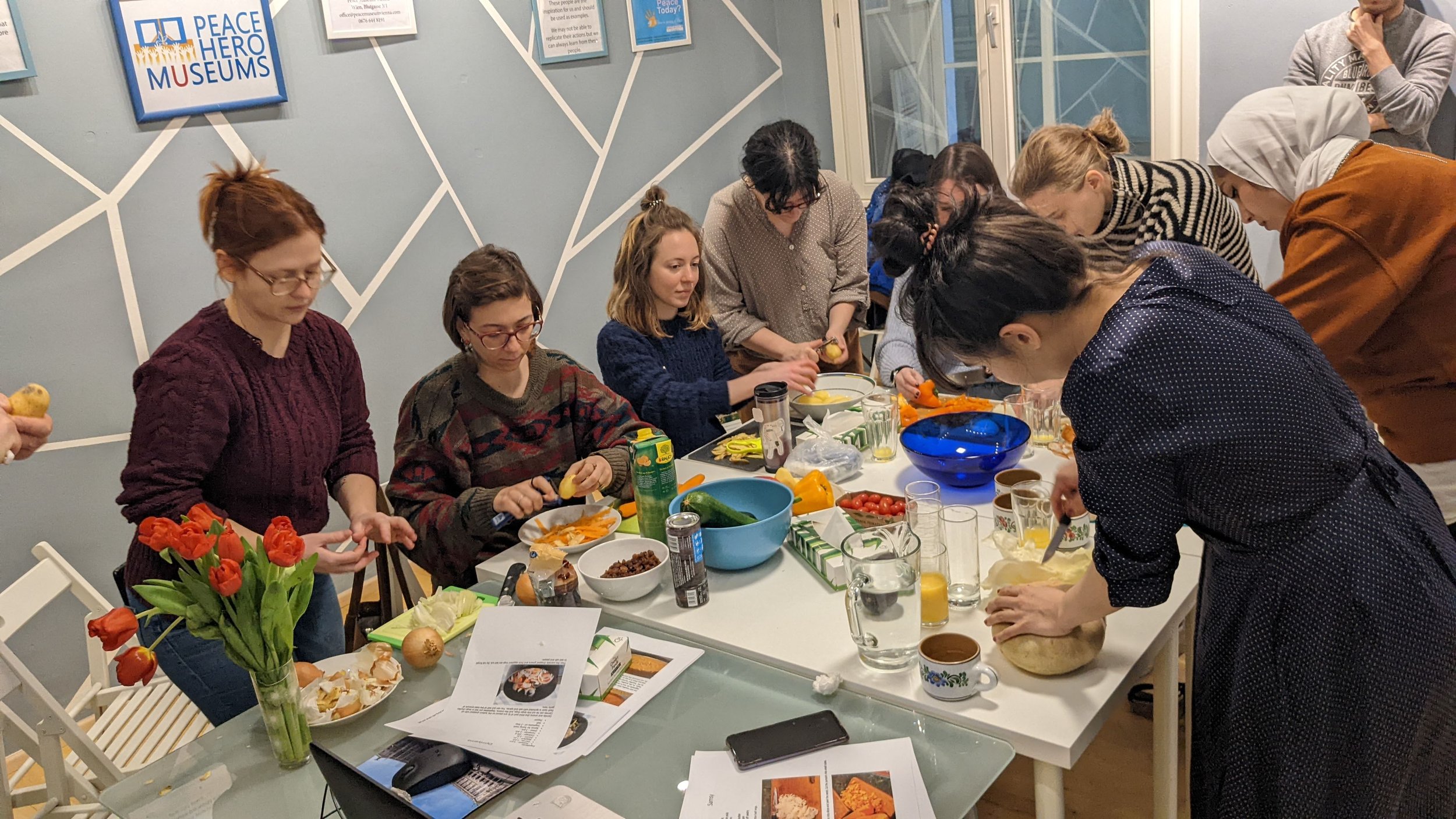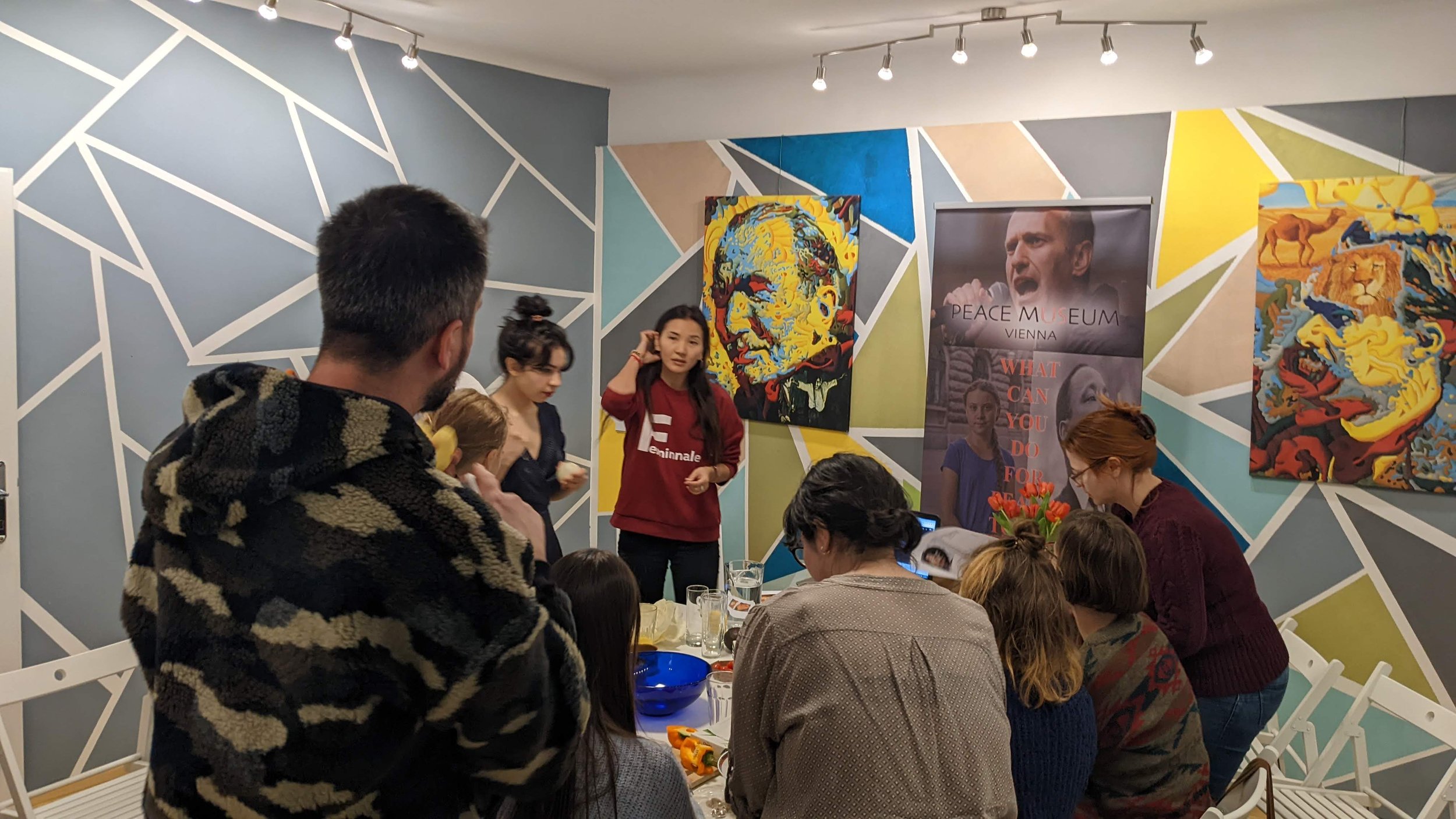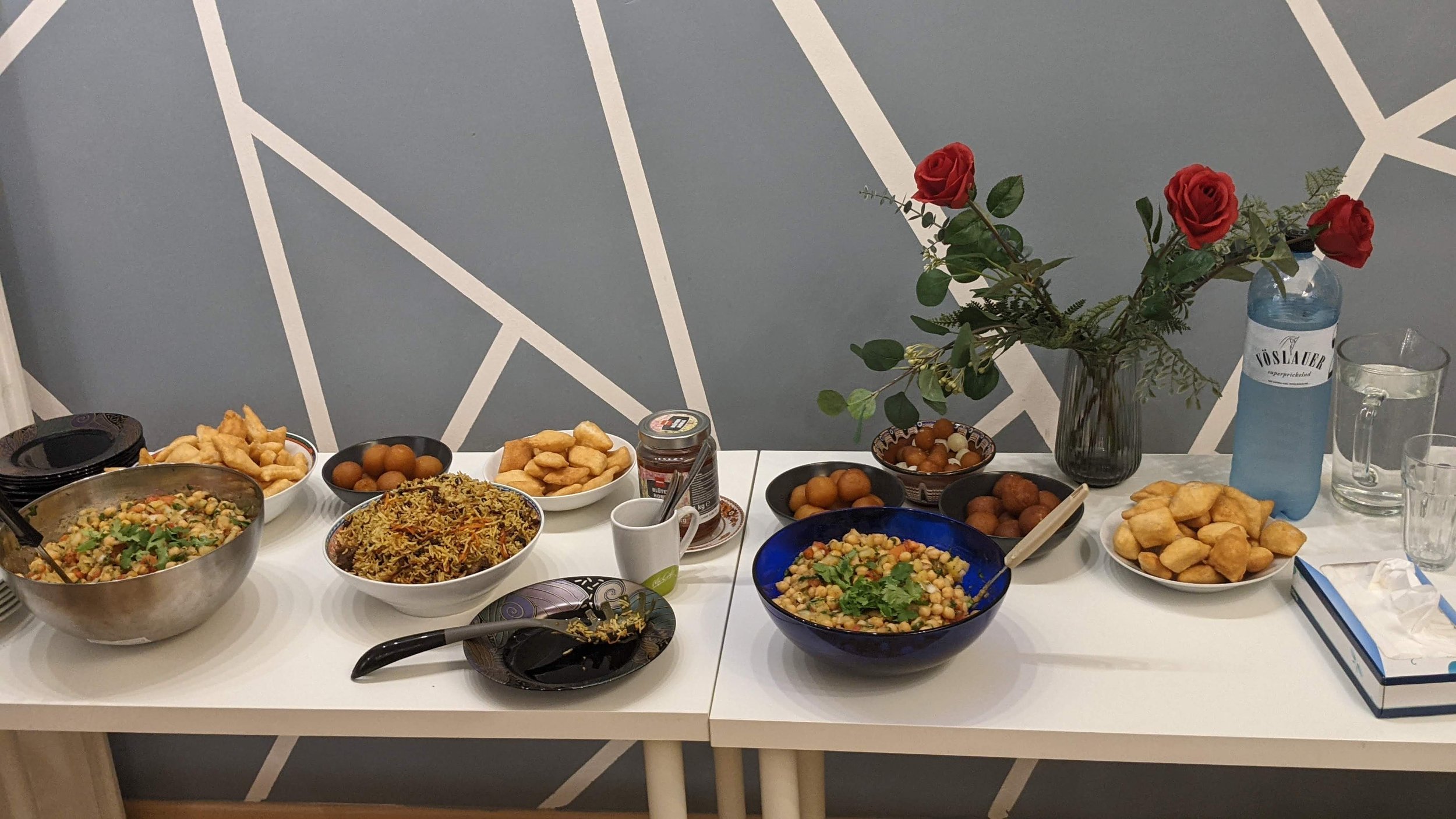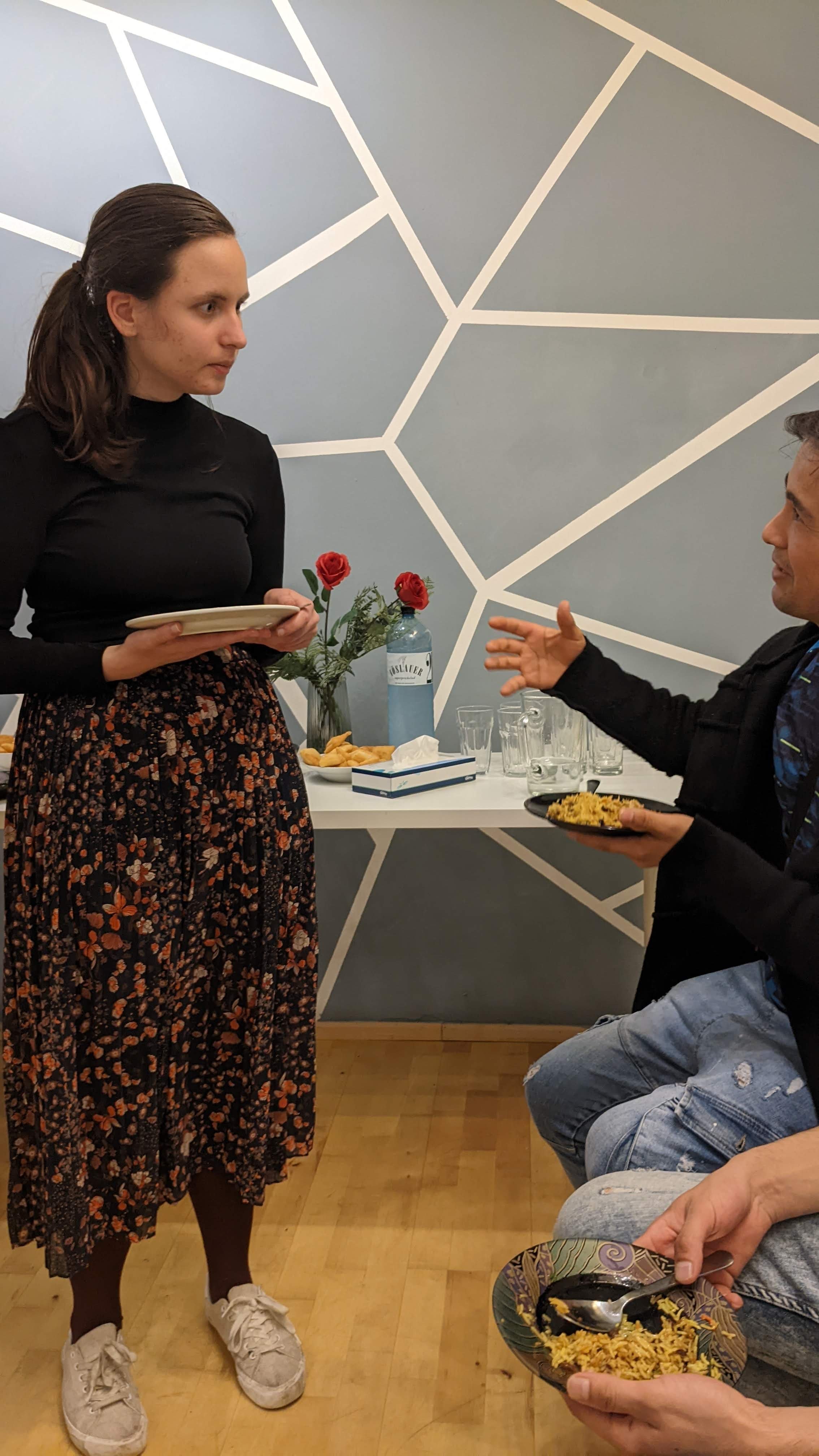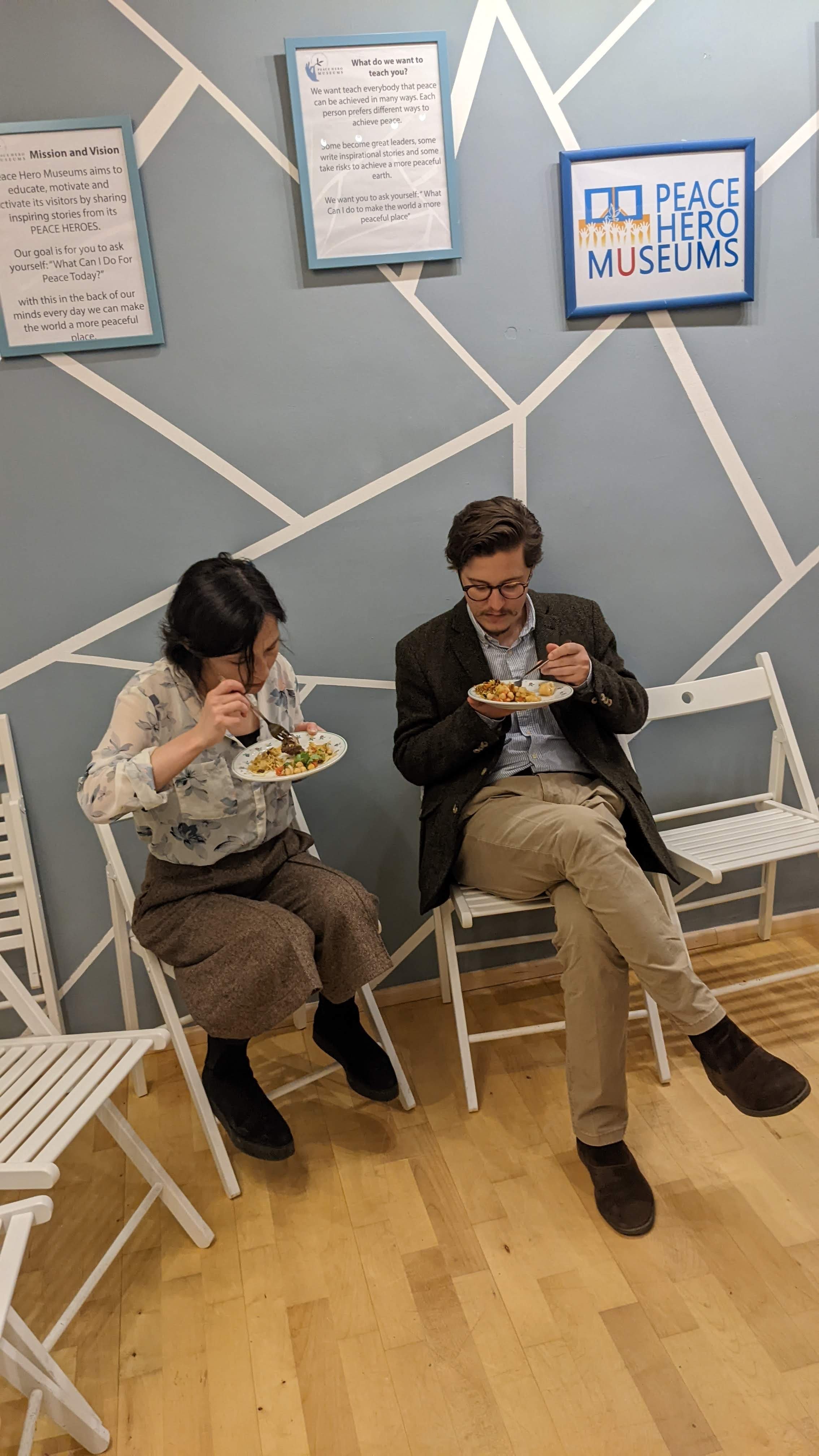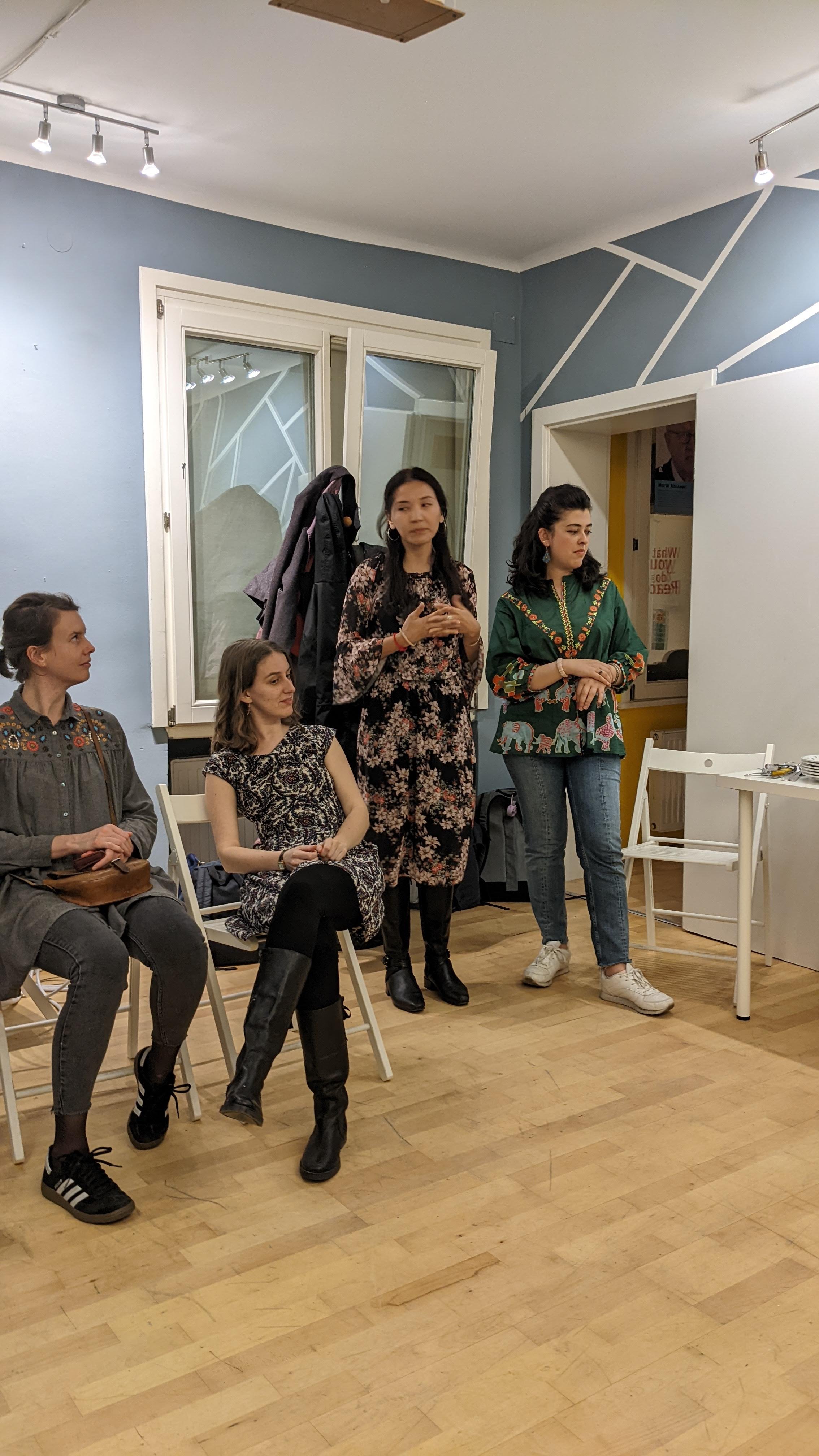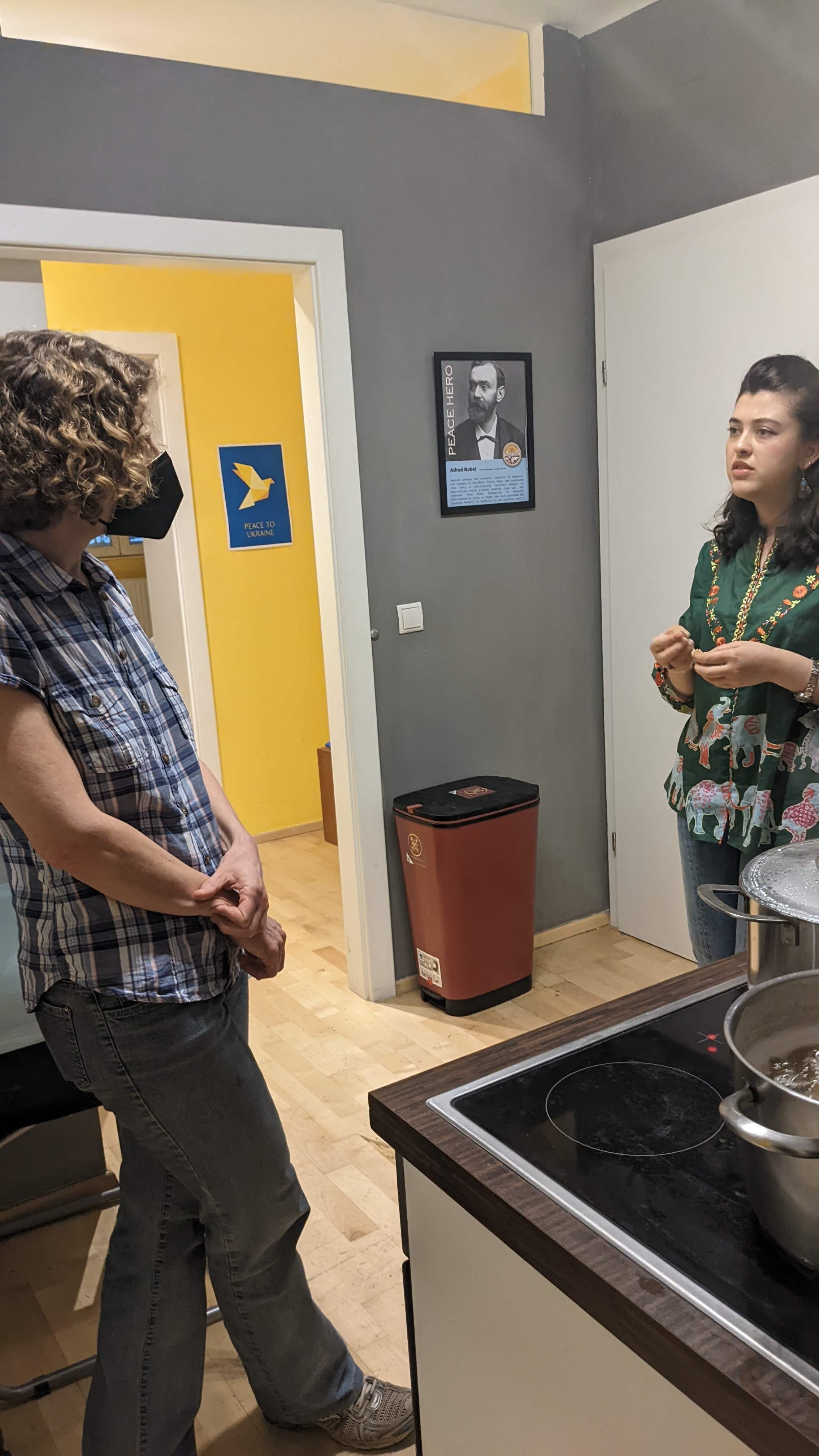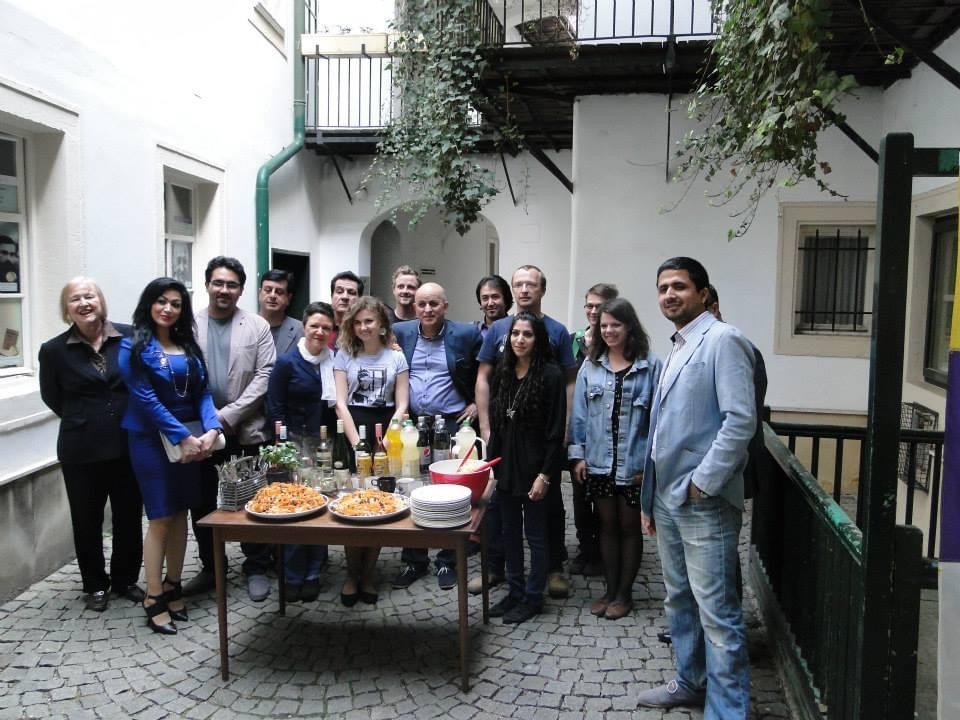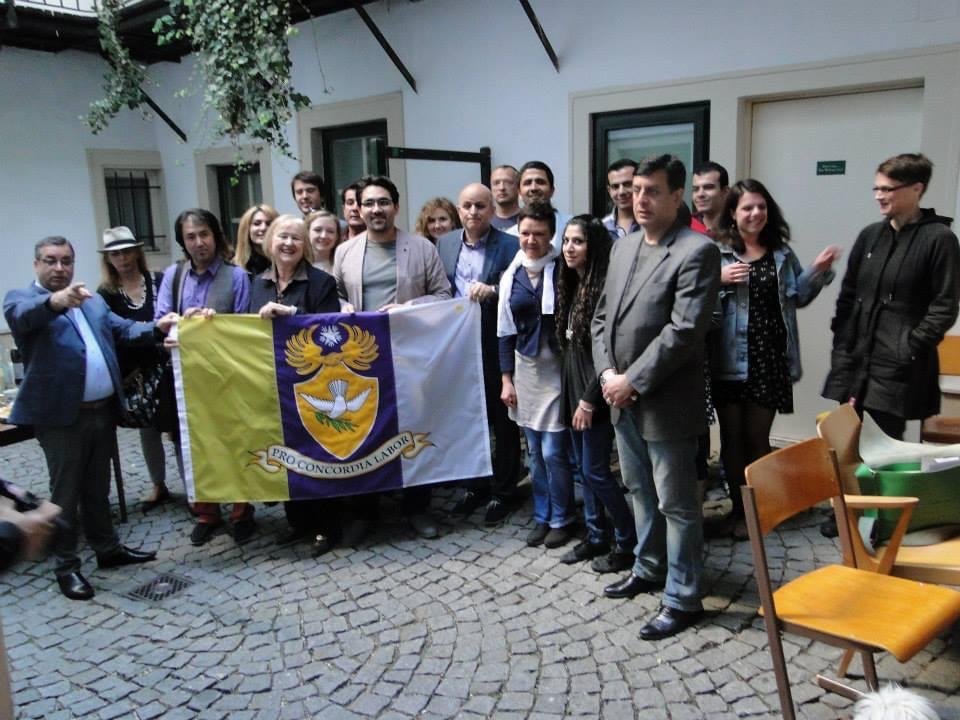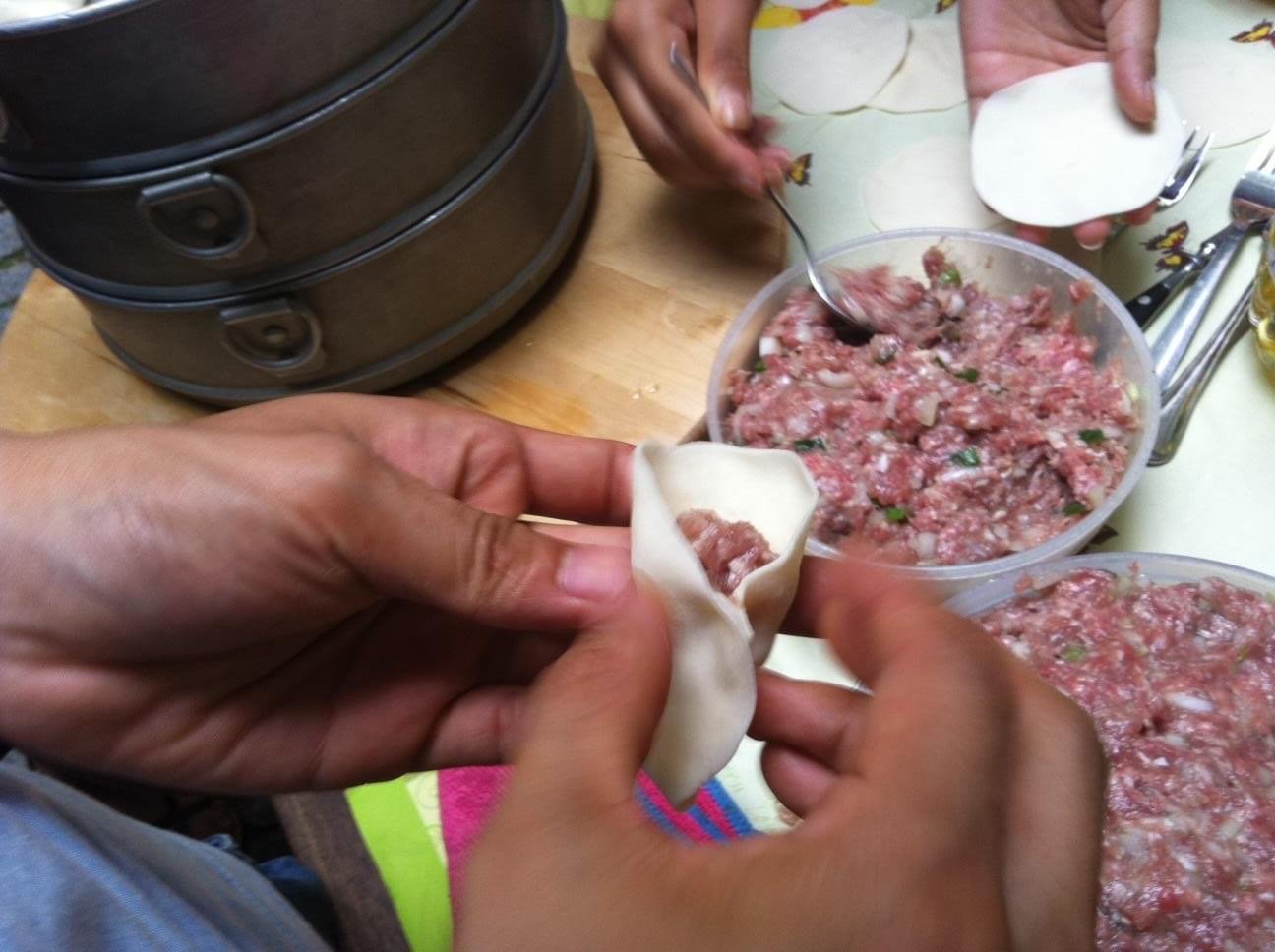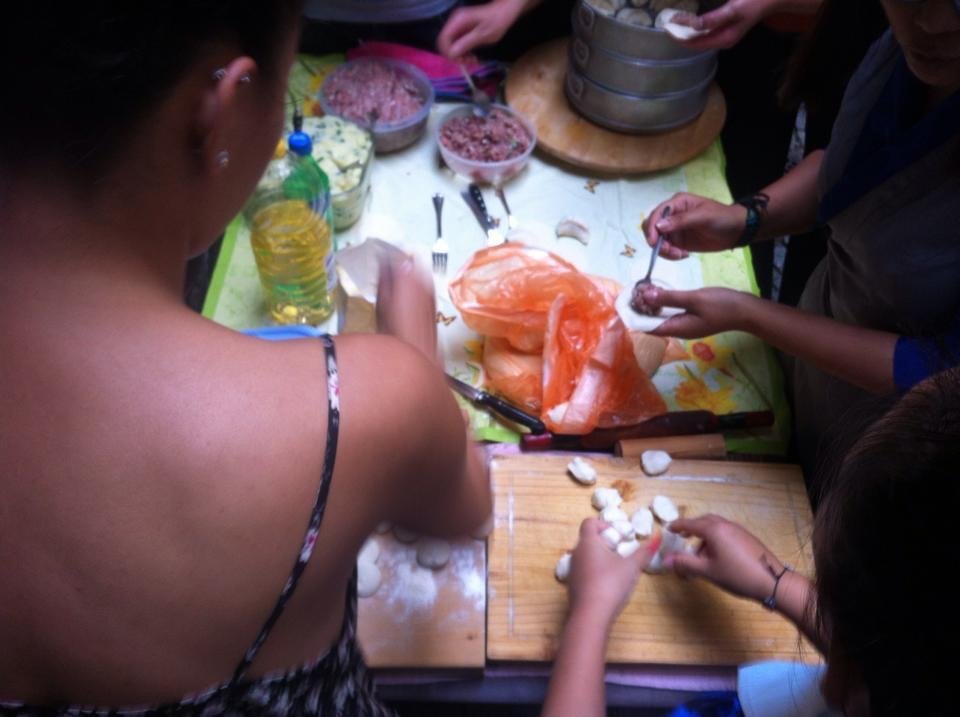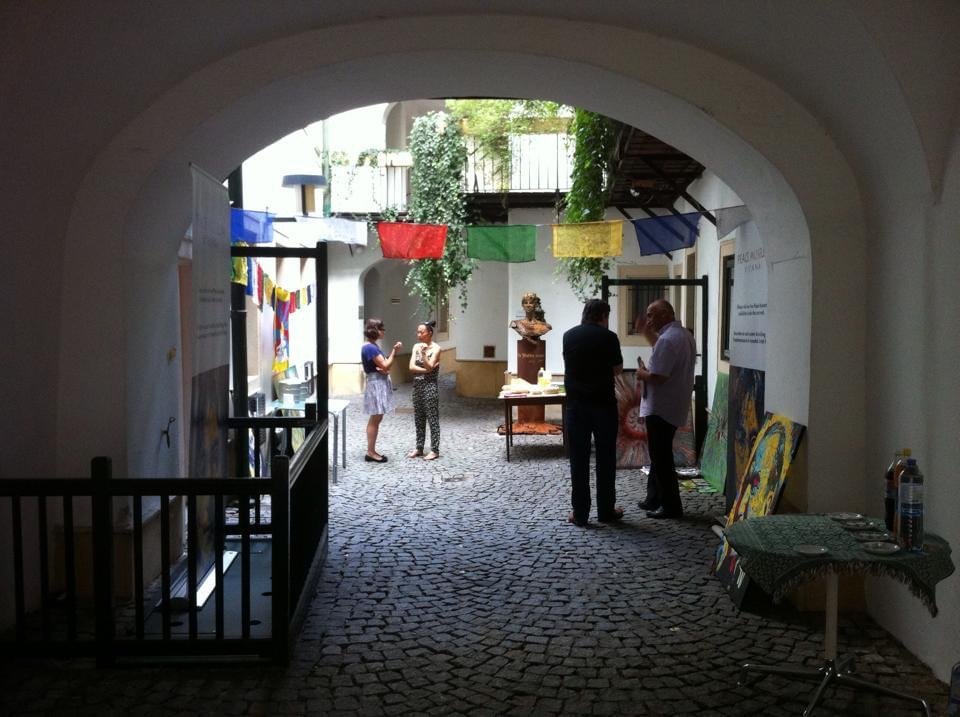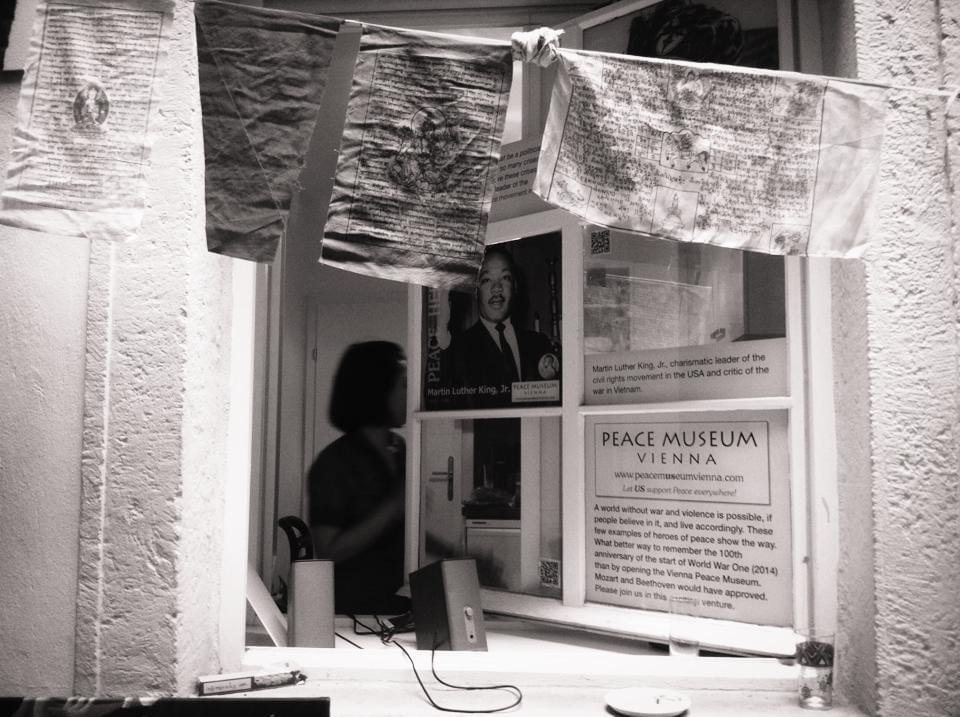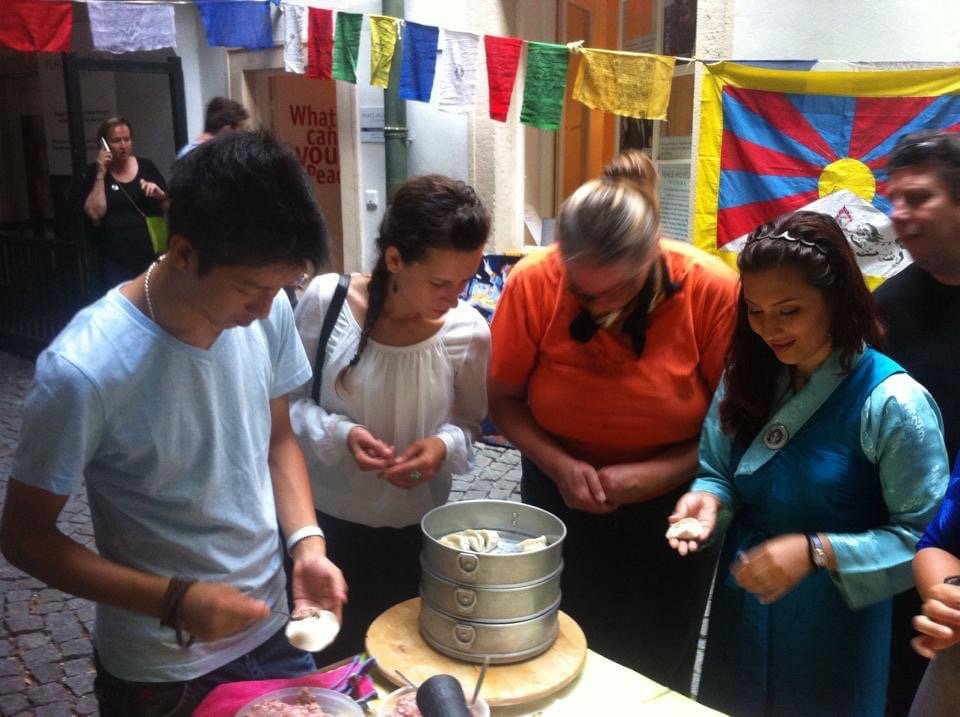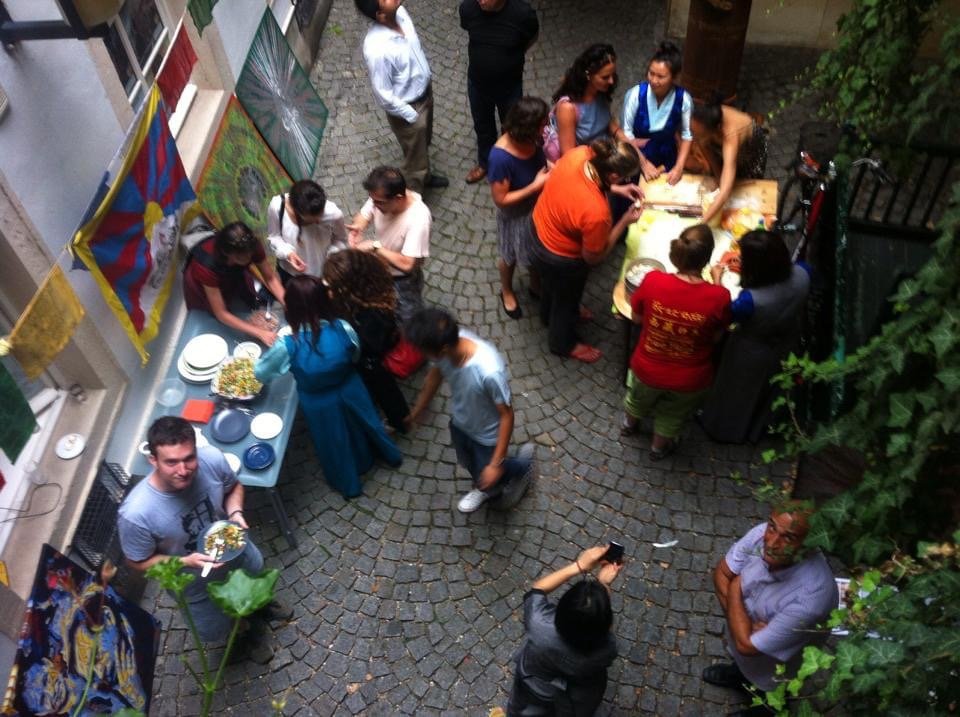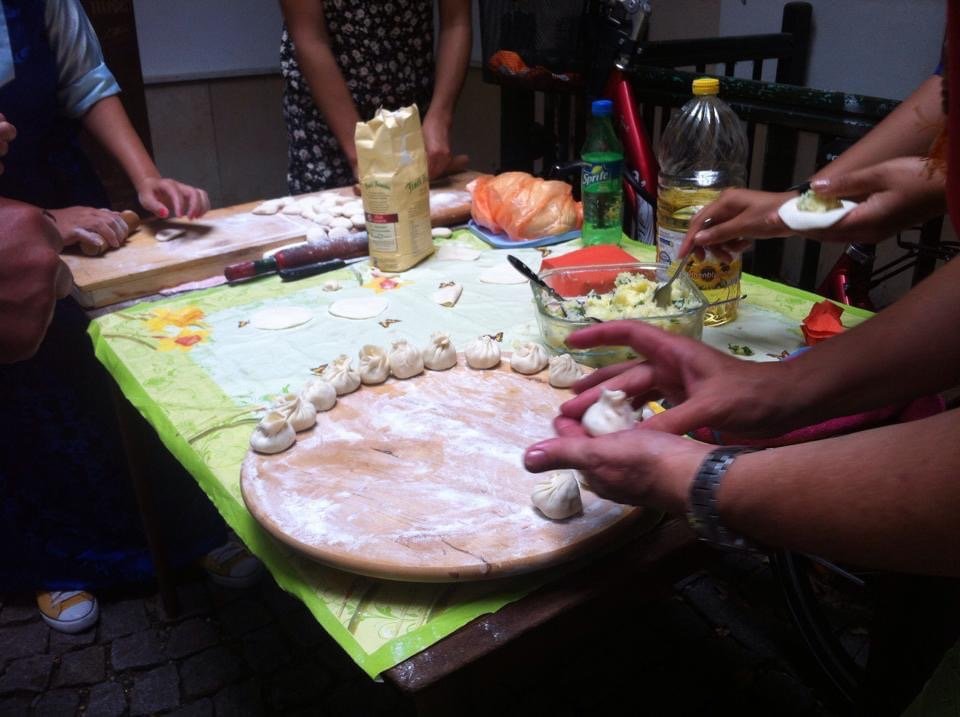The Peace Museum Vienna time hosts special events, such as the popular Peace Kitchens. The aim of such an event is to encourage and foster a meaningful discussion on peace and the ways in which we can further expand harmony and reconciliation. At a Peace Kitchen a number of volunteers from a particular country cook food from their country and share it with friends of the PMV and the public. The delicious menu ranged from authentic curries to different appetizers, such as salads, lentils and various dippings! We believe that food contributes to peace and how hunger is a sad reminder of those that are less fortunate. We seek to deepen cultural understanding through food, as we believe cultural understanding is the first of many steps towards peace. Each nation has its unique culture and tradition. During times of war, the nation’s cultural aspect is often disregarded and dismissed. In fact, cultural awareness is the first step in understanding conflict and paves the path in restoring and healing the nation’s humanity.
The goal of a Peace Kitchen is to provoke a discussion on peace and seek a way forward. We also discuss the content of the film and the peace messages that it carries. We hope to continue and expand this project.
Novruz 20/03/2024
The Peace Kitchen Novruz at the Peace Museum celebrated Kyrgyz traditions by inviting visitors to make Kezhe (or Chon Kezhe, meaning “big soup”) along with a simple treat of pomegranate seeds with sugar. Participants worked together to prepare Kezhe, a nourishing soup made with meat, root vegetables, and warming spices, symbolizing abundance and unity, especially during the Novruz holiday, which marks spring and new beginnings. Sharing pomegranate seeds—a symbol of life and renewal—sprinkled with sugar added a sweet touch to the experience. Through these dishes, visitors learned about Kyrgyz hospitality, the cultural importance of Novruz, and the joy of gathering to welcome new seasons in harmony.
Georgian Peace Kitchen 6/01/2024
The Georgian Peace Kitchen at the Peace Museum brought people together to cook Kharcho, a traditional Georgian soup known for its rich, spicy flavors and hearty ingredients. Participants learned how to prepare this beloved dish, made with beef, tomatoes, walnuts, and fragrant spices, discovering its role in Georgian cuisine as a symbol of warmth and hospitality. The experience introduced visitors to the traditions of Georgian dining, where food is central to family gatherings and community bonds. By making and sharing Kharcho, guests connected with Georgian culture and one another, highlighting the unifying power of shared meals across cultures.
Iranian Peace Kitchen 20/11/2022
The Iranian Peace Kitchen at the Peace Museum offered visitors a warm experience of Iranian hospitality through the making and sharing of traditional sweets and chai (tea). Participants gathered to prepare treats like shirini (Persian cookies) and enjoyed aromatic Persian tea, learning about the significance of tea culture and sweets in Iranian gatherings. Through this interactive experience, visitors discovered the importance of hospitality, generosity, and community in Iranian culture. Sharing sweets and chai created a peaceful, welcoming atmosphere, where guests connected with Iranian traditions and each other in a spirit of friendship and cultural appreciation.
Ukrainian Peace Kitchen 5/05/2022
The Ukrainian Peace Kitchen at the Peace Museum invited visitors to come together to make borscht, a beloved Ukrainian beet soup rich in flavor and tradition. Participants worked side by side, learning about the ingredients, recipes, and regional variations of borscht, which holds deep cultural significance as a symbol of family, heritage, and resilience. Through this shared cooking experience, visitors connected with Ukrainian values of community and hospitality, while also gaining an appreciation for the ways food can bring people together. The activity underscored borscht’s role not just as a dish, but as a unifying force and a reflection of Ukrainian identity.
Kyrgyz Peace Kitchen 28/03/2022
The Kyrgyz Peace Kitchen at the Peace Museum offered visitors a taste of Kyrgyz culture through the communal making of samsa, traditional stuffed pastries. Participants gathered to prepare these savory pastries, learning the techniques for kneading, filling, and baking samsa, as well as the cultural significance of sharing meals in Kyrgyz society. Through this hands-on experience, visitors gained insight into Kyrgyz hospitality, customs, and the importance of community. The activity fostered cross-cultural connections and celebrated the values of warmth and togetherness at the heart of Kyrgyz traditions.
Novruz 20/03/22
The Iranian Nowruz Peace Kitchen at the Peace Museum celebrated the Persian New Year, Nowruz, through the joy of cooking and cultural exchange. Visitors joined in preparing traditional Nowruz dishes, such as sabzi polo (herbed rice) and shirini (sweets), while learning about the rituals and symbolism of this ancient holiday, which centers on renewal, unity, and peace. Through hands-on cooking, participants discovered the importance of family, community, and nature in Iranian culture. The experience offered a warm, immersive way to connect with Nowruz traditions, highlighting shared values of hope and harmony for the new year.
Afghan Peace Kitchen 9/05/2015
The Afghan Peace Kitchen in 2015 at the Peace Museum was a communal experience where visitors gathered to make plov, a traditional Afghan rice dish, as a way to explore Afghan culture and its values of hospitality and peace. Participants worked together to prepare this hearty dish, learning about Afghan ingredients, cooking techniques, and the significance of shared meals in Afghan society. Through storytelling and cultural exchange, the activity allowed visitors to gain a deeper appreciation of Afghan traditions and perspectives, fostering connection and understanding across cultures.
Tibetan Peace Kitchen 25/07/2014
The Tibetan Peace Kitchen at the Peace Museum was an interactive exhibit where visitors came together to make Tibetan momos (dumplings) while immersing themselves in Tibetan culture. This hands-on activity encouraged participants to connect through food, a universal language of sharing and tradition. Guided by Tibetan instructors, visitors learned the art of momo-making—from folding techniques to seasoning—while gaining insight into Tibetan customs, values, and the importance of peace in their heritage. The experience fostered community, understanding, and a sense of cultural appreciation, leaving visitors with a meaningful connection to Tibetan ways of life.
